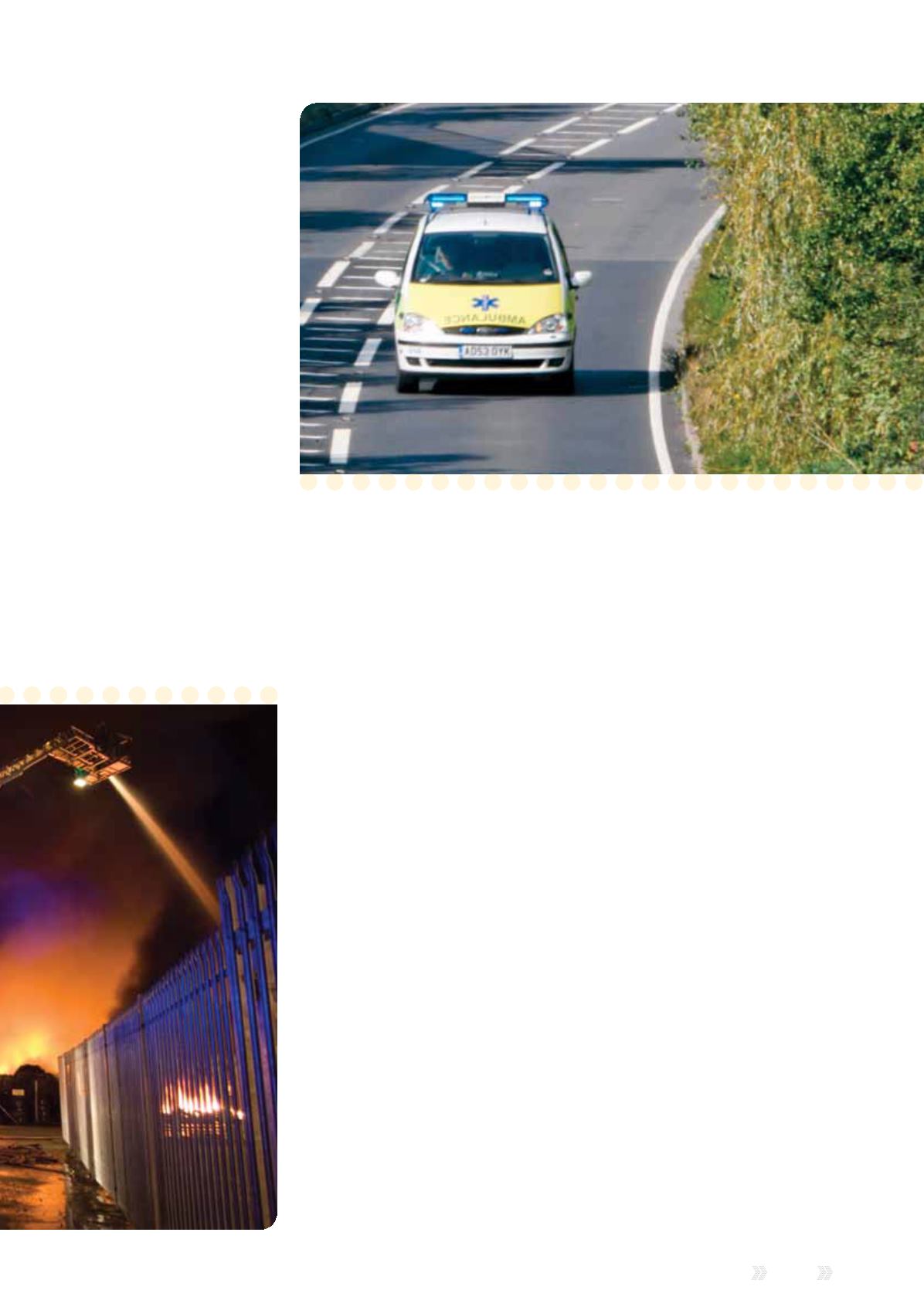
Reach
Issue 7 2014
|
27
In the past the emergency services
had at their disposal the means to
communicate with their personnel
that ordinary citizens did not
possess. However, this has changed
dramatically since the advent of public
mobile communication devices and
most of our population now regularly
use more than one such device.
It is naturally assumed that with new
mobile technologies and capabilities
the emergency services can do what
the public do – immediately adopt
new communications technologies in
their daily work. It is a fact of life that
this is not quite reality with emergency
services communications, largely due
to their ‘emergency’ role. The work our
emergency services do every single
day in the line of duty is unpredictable
and full of risks. As such emergency
services require a higher standard
of communications and they need it
instantly. Communications are mission
critical for our emergency services.
It is easy to think simply that anything
which is available for the public to
use, such as new smart devices,
commercial mobile broadband, and
apps, can be used by emergency
services. There is nothing to suggest
that this couldn’t happen, but we
must remember that emergency
services requirements differ from public
requirements in a very significant way
so let’s explore the reasons why.
Resilience & Coverage
Communications can be a lifeline
for our emergency services and so
network coverage can never be in
question. Communications act as
an enabler for our services in many
ways for example: to summon urgent
assistance, to communicate the
events of an incident or to simply
deploy resources to an incident. No
matter what, communications MUST
work wherever, whenever.
Knowing that communications are
tried tested and reliable is paramount
in mission critical communications
along with devices which are robust
and ruggedised. As a member of
the public, if my mobile coverage is
unavailable it is personally extremely
frustrating. As a member of the
emergency services, if I am out of
coverage I might not be able to do my
job and in an emergency situation if
I can’t do my job, something serious
and life threatening could happen.
Security
Transport your mind back 13 years,
and remember a time when emergency
services communications could
be eavesdropped. During this time
information discussed by emergency
services could be listened to by
journalists, terrorists, criminals, not
to mention Ham Radio operators –
amateurs and enthusiasts.
With the types of information our
emergency services communicate
to one another, it is vital that any
communications they have are
completely secure, and those
handling the communications do
the utmost to uphold the integrity
and confidentiality of data. Bear in
mind recent security breaches from
journalists, online data theft, hacking
and phone hacking and you can
understand why security still remains
an important element of emergency
services communications.
Responsiveness
and Interoperability
A split second can make a world
of difference for our emergency
services. Responsiveness of
communications for our emergency
services is essential. Responsiveness
can include a myriad of things:
»
»
The ability for a communications
provider to respond in
extreme conditions to ensure
communication is working
throughout, no matter what.
Maintaining service 24/ 7/ 365.
»
»
A single button which, if pressed
during an emergency, will over-
ride communications and put you
to the top of the list – facilitating
emergency back-up being at your
side within minutes. Trusting this
emergency button to work every


